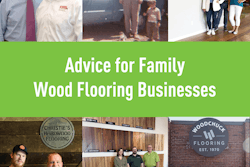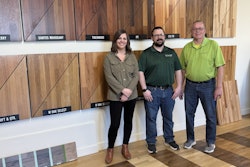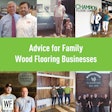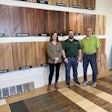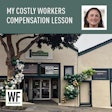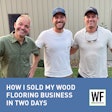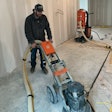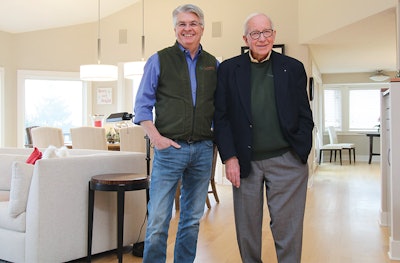
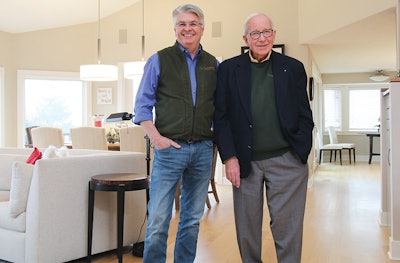 My mentor, Roger Smith, transformed how I run my company.
My mentor, Roger Smith, transformed how I run my company.
When I bought my business in 2007, I had a business plan. After that, I would think about the plan once in awhile, but like most business plans, things don't always go as planned … they just go. My business wasn't moving in any real direction when something happened that mapped a path.
I belong to a local business leader group, and that was where I connected with Roger Smith. He's had a long career in business, and he also taught marketing and sales management and authored books at the University of Oregon. In 2013, he proposed to be my marketing consultant. Consultants like Roger in a market our size vary in price up to $1,000 per month. Hiring him was a chunk of money for me at that point, but I figured if at any point I felt like it was a waste of money, I could just stop.
We started getting together for lunch every Friday. He asked: What's your goal? I realized I hadn't really thought, as a business, what the goal was. As we talked, it became evident that I wanted my business to be No. 1 in Eugene for wood floors, so we started to look at how we could actually reach that goal.
Beginning took some research. Roger went to competitors' locations and looked at them online. I took home the job records from the last two years of residential clients to classify them. How much was the job? What was it (installation, refinish, etc.)? What (according to my best guess) was the homeowners' income level? What was their zip code? I did this separately for our GC clients.
In doing this, I got a profile of the demographics of our ideal customer, and we laid out goals. "The Plan," as we call it, is written and organized in a notebook to refer back to at any time. We also provided a copy to our bank when it came time to renew and increase our line of credit. Roger compiled it—if I were in charge of it, it would still be in the works. Having the plan fit in with something my dad, who owned a luxury car dealership, always said: "When you're green, you grow. When you're ripe, you rot!" Basically, if you think the status quo is fine, that becomes shrinkage, and pretty soon you're gone. Here are major changes we made:
RELATED: A Distinction I Never Wanted: Being Expensive
I wasn't afraid to be expensive
Before Roger, if customers said, "I got three bids and yours is the highest, but I want you to do it. If you do it for what this other guy said, you can do it," my knee-jerk reaction was to do it. They always turned out to be the hardest customers to work for. Roger taught me not to be afraid to be the highest (and that some customers prefer it). Today, I take pride in being the most expensive estimate (when I'm not, I worry that I missed something!).
We added staff
Another main goal Roger and I developed was to have a full-time office manager and a full-time salesperson. In the last year, I've done that, and it's helped us to see more customers, get more proposals out, and get more organized. I still do some sales, but I'm able to do more planning. I was even able to go on vacation without feeling too bad about going. Before, it was all on me to keep my nine guys busy, and if I wasn't doing my job, they weren't working.
Employee relations
Roger also helped me define what it takes to retain employees. I learned that money is not the most important part of retention; in fact, job satisfaction, training and advancement are above pay, and so is the benefit package. We provide paid holidays, paid vacation, paid sick time and pay 83% of the employees' health insurance. At times I have considered cutting some of these to help with profitability. His answer has always been to raise prices to cover the costs instead.
We targeted the design community
I wanted to be the go-to company for architects and designers. We now do continuing education in our showroom once or twice a year. It's accredited by AIA and ASID, and we have drinks and appetizers. We want to be on their minds, and it's worked. People we invited but didn't show up have called us for projects—we have one interior designer who didn't come, but within two months of the seminar, we did $45,000 of business with her, and she continues to be a great customer.
RELATED: How Hiring Outside Experts Transformed Our Wood Flooring Business
We started company meetings
We now have a monthly staff meeting where we talk about anything from how you present yourself with customers to workers comp to my philosophy of "HHP"—happy, healthy and productive. One of the guys from the crews presents on safety (we give them a catalog of topics to pick from). We hand out an agenda in advance. If you don't stick to scheduling these, it's really easy to let the months slide by before you actually meet.
We clarified customer expectations
Roger suggested we devise a project information sheet that we give to every customer. It explains all aspects of the job, from what time to expect us at the house to the fact that we need access to 220 power. It helps the job be professional all the way through.
We leave our information on jobs
At the end of every project we now leave a sticker with our information, the job number and date, and we suggest they put it in their circuit breaker box. That's a space nobody messes with. I get three or four calls a year from someone who has found our info there.
We publicized our company
Roger helped us realize how easy it was to increase our visibility by sending the local paper a press release every time something important happened for our company, like when we became Bona-certified. Of course, my mom cut those out and saved them!
I send thank you notes
At Roger's suggestion, the last thing on every job is a handwritten thank you to all our residential customers. My mom's an artist, so she designed a beautiful card with a collage of wood. I include my business card and a lens cleaning cloth, and I also suggest they tell their neighbors or tell the entire world with a five-star rating on Google or Yelp.
My goal was to double our revenue by this year, and we expect to meet that goal next year. Progress isn't always a straight line, but if you don't have the goal, you'll never get there. I still meet with Roger every Friday, and by now we're friends. Sometimes I wonder: At this point, do I really need to keep paying him to do this? But then I realize how easy it is to get swept up in being busy. He keeps me accountable and focused on the bigger picture. No matter the size of your business, I highly recommend finding a mentor to help with your success.















